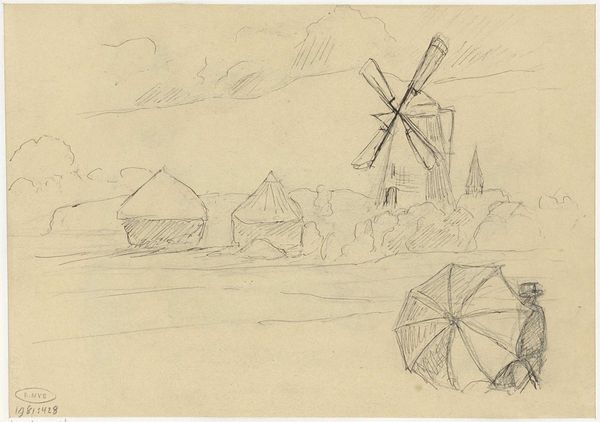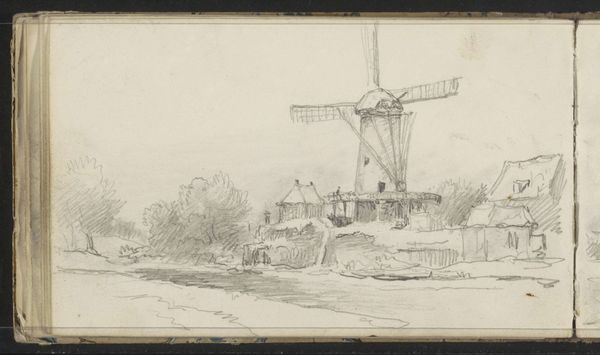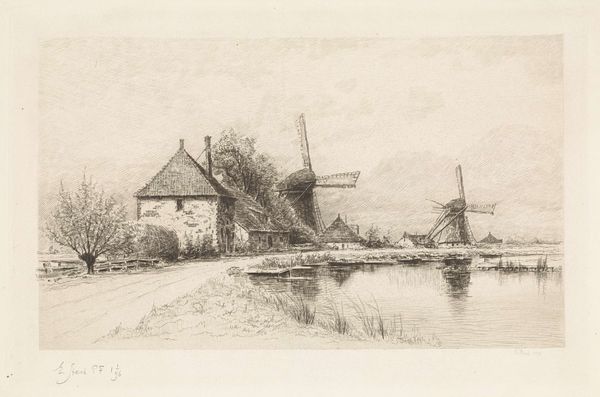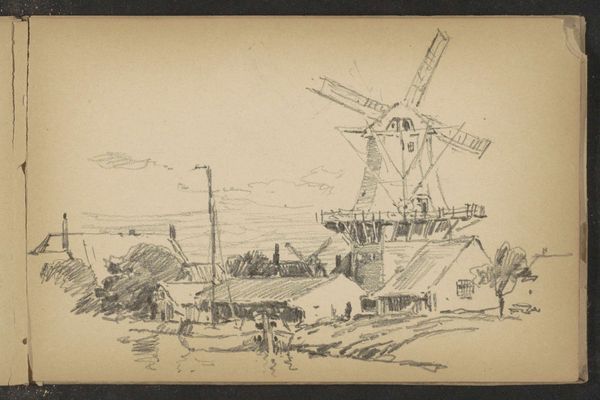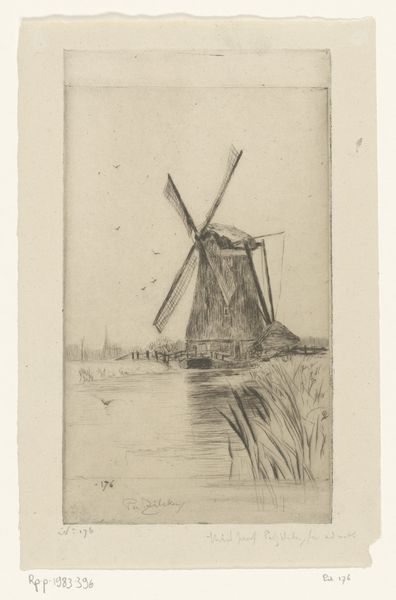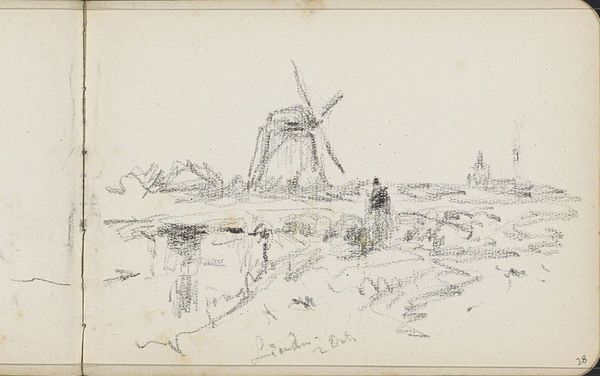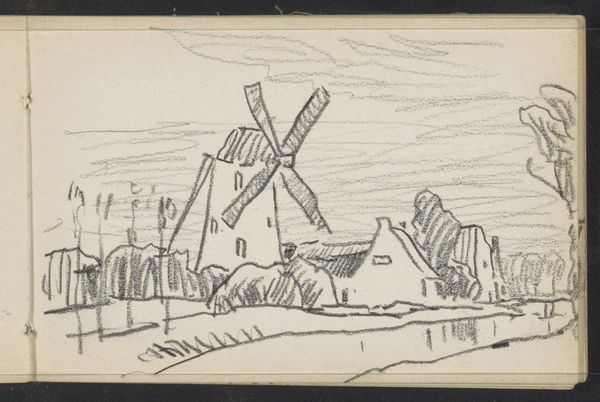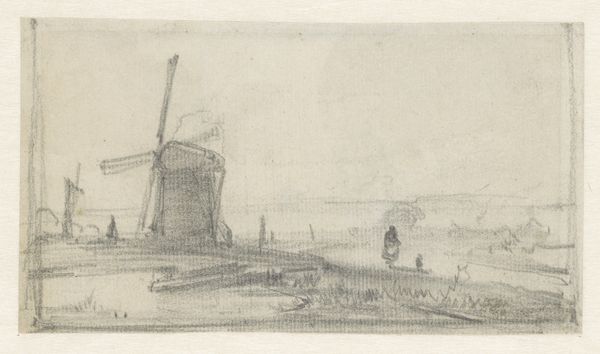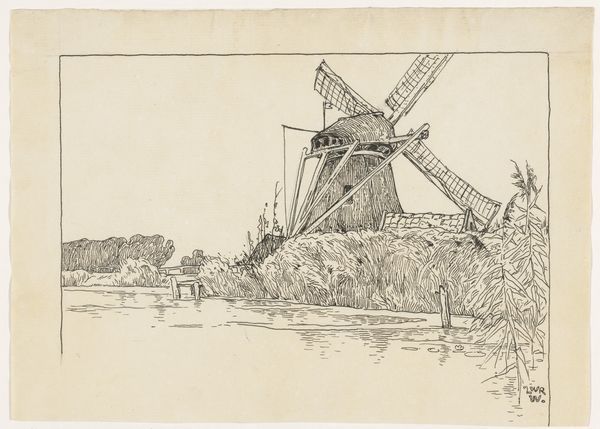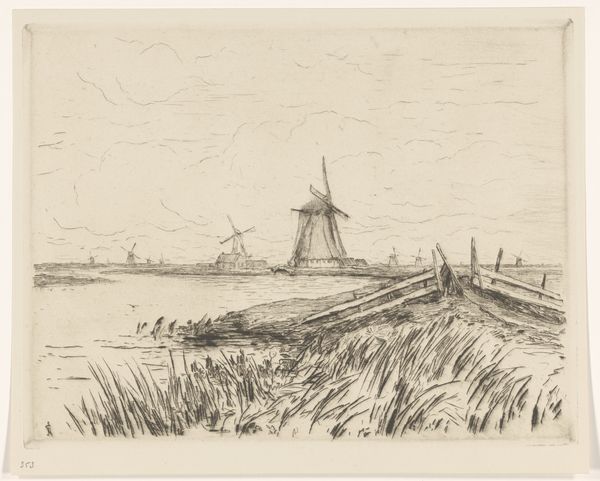
drawing, pencil
#
drawing
#
pencil sketch
#
landscape
#
etching
#
pencil
#
pencil work
#
realism
Dimensions: height 102 mm, width 162 mm
Copyright: Rijks Museum: Open Domain
Editor: So, here we have Georges Michel's "Molen op de Butte," a pencil drawing created sometime between 1773 and 1843. It’s a landscape dominated by a windmill, but it feels almost ghostly, with a muted, dreamlike quality. What strikes you when you look at it? Curator: Immediately, I'm drawn to the windmill itself. It’s not just a structure; it's an echo. Windmills, for centuries, have symbolized human ingenuity, our attempts to harness nature's power. Yet, the ethereal rendering here suggests something more. Do you notice the almost skeletal quality of the blades? Editor: I do, yes. They seem more fragile than functional. Curator: Exactly! Think about it: what happens when a symbol becomes antiquated? When the technology it represents is surpassed? It risks becoming a relic, a ghost of its former self. Michel captures this sense of transition beautifully. Notice how the surrounding landscape is equally vague. Editor: It's as if the present is already fading into memory. Is it a commentary on industrial change, perhaps? Curator: Perhaps, or even a broader reflection on the passage of time. Windmills speak of cycles - the turning of seasons, the grinding of grain. Consider also how this was made with pencil, which lends itself to correction and erasing; what disappears and reappears. Michel is pointing to the impermanence of even our greatest achievements. Editor: That gives the drawing a whole new layer of meaning for me. It’s not just a landscape, but a meditation. Curator: Precisely. It encourages us to consider what endures, and what we risk losing as we progress. It is in the visual memory that we find not only preservation but contemplation.
Comments
No comments
Be the first to comment and join the conversation on the ultimate creative platform.

